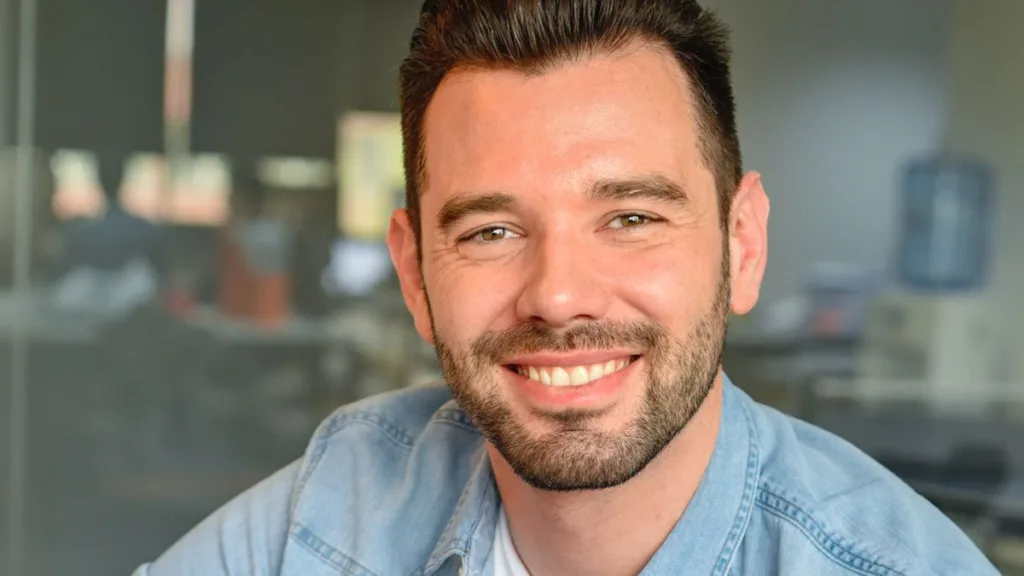Ben Cicchetti is VP, Corporate Marketing at InfoSum and the latest to be interviewed for NDA’s Media Pride initiative.
What is the biggest challenge for members of the LGBTQIA+ community in the digital industry and how is it being overcome?
The LGBTQIA+ community as a whole is going through a challenging time. All around the world, we’re seeing discriminatory legislation debated and enacted. In the US, there are currently 492 state-level bills targeting LGBTQIA+ rights being tracked by the ACLU, while in the UK the trans community in particular is being attacked by politicians both in the government and the opposition.
In Europe and Central Asia, violence against LGBTQIA+ people reached its highest point in the past decade last year, according to the European International Lesbian, Gay, Bisexual, Trans and Intersex Association (ILGA). These sentiments have been trickling through into the media industry, with campaigns facing fierce backlash, especially during Pride month. As advocated for by Outvertising and other LGBTQIA+ rights groups, it’s essential that brands stand their ground now more than ever, both in their campaigns and in their internal policies.
Within organisations themselves, one significant challenge for the LGBTQIA+ community is underrepresentation, especially in leadership positions. Having visible LGBTQIA+ leaders sends a clear signal that the company values diversity and inclusion; what’s more, seeing these individuals in senior roles can help inspire early-career professionals to overcome perceived barriers and glass ceilings. You can’t be what you can’t see.
What three things could employer companies do to make the digital industry better for the LGBTQIA+ community?
There are three areas where businesses can really make a difference for their LGBTQIA+ employees.
1. Level up – Companies must amplify LGBTQIA+ voices within the organisation and provide equal opportunities for employees to take on management and leadership roles. As I mentioned before, seeing LGBTQIA+ individuals in senior positions has a massive impact on young professionals, and creates a more welcoming and inclusive working environment. Not only this, but companies with diverse leadership teams are also proven to be better performing; a McKinsey report found them to be 25% more likely to achieve above-average profitability.
2. Show up – Businesses must actively engage with, volunteer for, and promote LGBTQIA+ activities and initiatives. By doing so, they create a sense of belonging and demonstrate their solidarity. Tangible actions that show commitment to LGBTQIA+ causes make a strong show of allyship. Showing support for media such as PinkNews, LGBTNation and GayTimes is another way businesses make a difference.
3. Speak up – Speaking out against discrimination and offensive language is crucial. It can be difficult for LGBTQIA+ colleagues to do so themselves, so managers and other individuals in the business must challenge inappropriate behaviour or remarks on their behalf. In doing so, it’s important to be mindful of the situation and the comfort level of LGBTQIA+ individuals – direct confrontation may not be the best way forward.
What impact can a more inclusive approach to LGBTQIA+ communities in our industry have on society as a whole?
Businesses in general hold significant influence, so where they choose to lend their support makes a tremendous impact. The media industry specifically is the gateway to the content we all consume and therefore has the power to shape public perception and attitudes toward the LGBTQIA+ community.
When the media portrays LGBTQIA+ individuals and issues in a positive and respectful manner, it has several significant impacts. Firstly, showing diverse LGBTQIA+ experiences, challenges and triumphs fosters empathy and understanding among the general public. This helps to tackle stereotypes and prejudices, and boost social acceptance.
Secondly, positive and authentic representation of the LGBTQIA+ experience increases the visibility of the community in wider society. This in turn reduces stigma and stereotypes, promotes self-acceptance and empowers members of the community. Thirdly, positive portrayals within the media create a sense of belonging and empowerment within the LGBTQIA+ community.
What support structures and organisations are most important and effective to the LGBTQIA+ community in the digital industry?
Organisations that want to provide effective support to LGBTQIA+ employees should start by focusing internally. Establishing an employee resource group (ERG) for LGBTQIA+ employees is the first step on this path.
These groups serve multiple purposes, providing a safe space for LGBTQIA+ employees and allies to discuss topics important to them. ERGs also provide a forum to educate allies within the business on the challenges LGBTQIA+ people face on a daily basis. Having an ERG in place will also help organisations attract and retain diverse talent, as they serve as proof of a wider commitment to creating a safe and inclusive working environment.
How effective are trade bodies, industry awards, and the industry press at supporting and promoting LGBTQIA+ inclusivity?
We’re definitely seeing positive strides in this area, with more industry press focused on the LGBTQIA+ experience and challenges. There are also a greater number of awards focused on spotlighting the fantastic LGBTQIA+ leaders and creators within the media industry, as well as the talented individuals building the technology platforms that underpin the industry.
Events are another area where we are seeing an improvement. For example, at Adwanted’s Future of Brands event we saw a session dedicated to LGBTQIA+ inclusivity, and at Cannes Lions there were half a dozen events focused on the LGBTQIA+ community. However, there is still much more we need to do.









